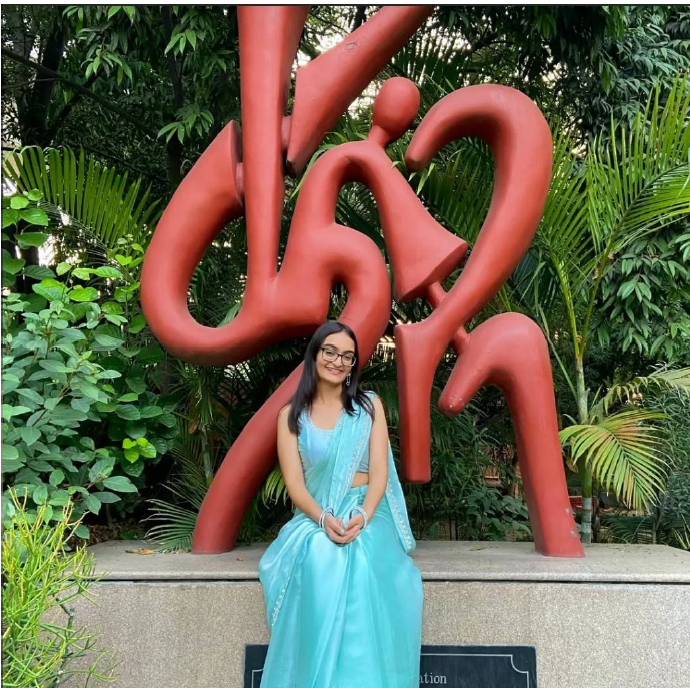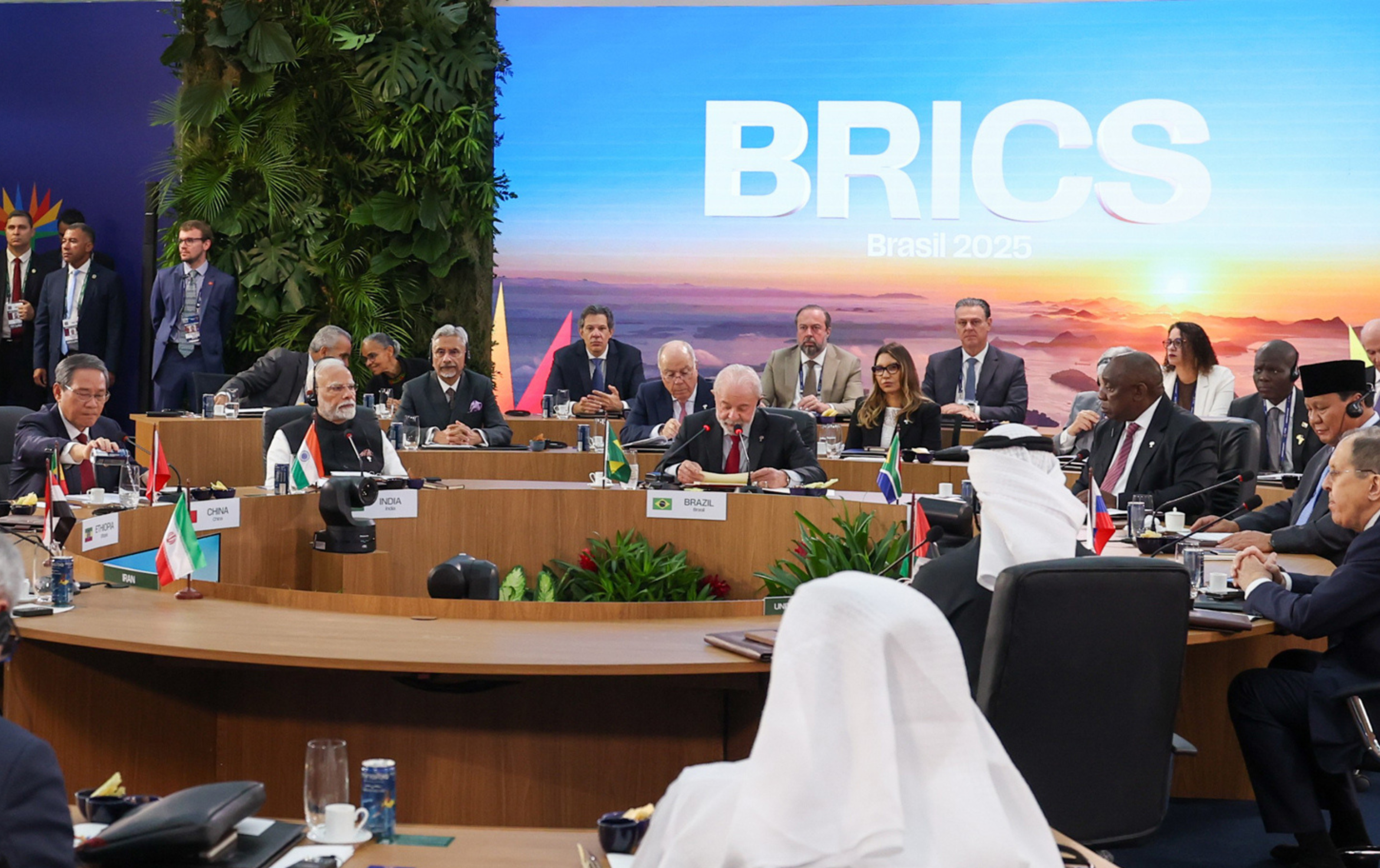“The expansion of BRICS and the inclusion of new partners reflect its ability to evolve with the times…In the age of AI, where technology evolves every week, it’s unacceptable for global institutions to go eighty years without reform. You can’t run 21st-century software on 20th-century typewriters!”
– PM Narendra Modi at BRICS 2025
The BRICS alliance, originally formed as a grouping of Brazil, Russia, India, and China (BRIC) in 2006, expanded with the inclusion of South Africa in 2011, forming BRICS. This alliance, initially focused on amplifying the voice of the Global South against Western-dominated institutions, is now evolving into a critical geopolitical bloc that seeks to reshape global power dynamics. The BRICS+ group is increasingly seen as a counterbalance to the influence of the West, with an expanded membership that has significant geopolitical and economic implications for the global order.
One of the primary goals of BRICS is the reduction of dependence on traditional Western institutions like the IMF and the World Banks. The introduction of the New Development Bank (NDB) and the Contingent Reserve Arrangement (CRA) has been a response to this imbalance. These institutions aim to provide alternatives to Western-led financial structures and help countries with funding requirements for developmental projects. At the same time, BRICS is advocating for a shift away from the monopoly of single currency, as evidenced by discussions at the 2024 Kazan Summit, where reducing dollar dominance became a major agenda.
Since 2014, India has significantly strengthened its position within BRICS, evolving from a participant to a key influencer in shaping the group’s direction. Under Prime Minister Narendra Modi’s leadership, India has prioritized strengthening its global influence through active diplomacy, economic partnerships, and strategic alliances. India’s economy has become the world’s fourth-largest, with its growth rate positioning it as a major player in global trade and geopolitics. Within BRICS, India has taken a leading role in advocating for multilateralism, pushing for a more equitable global governance structure. India’s foreign policy after 2014, characterized by proactive engagement with both Eastern and Western powers, has further reinforced its position within BRICS and on the world stage.
India’s Role in Shaping Global Power Dynamics
India, as one of the founding members of BRICS, is playing an increasingly pivotal role in reshaping global governance. BRICS+ countries account for about 45% of the global population and 40% of the world’s GDP. India, with its growing economy (currently the fourth-largest globally), has become a leader in the global shift from a unipolar to a multipolar world. India’s role is central to the BRICS+ transformation, as it continues to position itself as a power broker in both regional and global contexts.
India’s growing ties with countries like Egypt, Ethiopia, and the UAE highlight how BRICS is expanding its influence. India’s trade and security partnership with Egypt, which joined the NDB in 2023, strengthens its position in North Africa. Similarly, its longstanding relationship with Ethiopia boosts its influence in Africa through economic and defense support. By fostering strong bilateral ties with emerging economies, India has not only enhanced its influence within BRICS but also built a global network emphasizing trade, defense, and infrastructure. This strategic autonomy, along with global partnerships, solidifies India’s role as a key player in shaping the global order.
The inclusion of the UAE in BRICS is particularly significant for India, as it allows India to strengthen its position in the Middle East. The Comprehensive Economic Partnership Agreement (CEPA) between India and the UAE exemplifies this deepening relationship, enhancing trade and economic cooperation. This partnership reflects a common approach where both countries maintain strong relations with both the East and the West, reinforcing India’s strategic autonomy and global influence.
BRICS+ and the Shifting Global Order
As BRICS expands, it is not just increasing its economic clout but also shifting the global geopolitical structure. The group’s increased production of oil and other resources and its growing economic footprint signify a challenge to the traditional G7-dominated order. BRICS+ countries now represent over a quarter of the world’s GDP, with Brazil, India, and China playing key roles in driving policy. The inclusion of diverse nations such as Egypt, Indonesia, Iran, and Saudi Arabia in BRICS+ further highlights the multi-alignment approach the group is adopting, where countries seek to maintain balanced relationships with both Western and Eastern powers.
India, particularly, stands out as a country that is leveraging its position within BRICS+ to reshape its global standing. As a leader in BRICS+, India is also influencing the group’s collective decision-making, steering it towards a more inclusive and multipolar world order.
India’s influence within BRICS and BRICS+ is reshaping the global balance of power. The group’s growing economic and geopolitical presence, coupled with India’s strategic role, is creating a shift from a unipolar, Western-dominated world to a more diversified, multipolar global order. As BRICS+ continues to evolve, India is positioning itself as a pivotal player in the ongoing transformation of global power dynamics. The BRICS expansion, with its emphasis on multi-alignment and de-dollarisation, is changing not only economic landscapes but also geopolitical frameworks, marking a significant turning point in the global order.
The views and opinions expressed here belong solely to the author and do not reflect the views of BlueKraft Digital Foundation.







